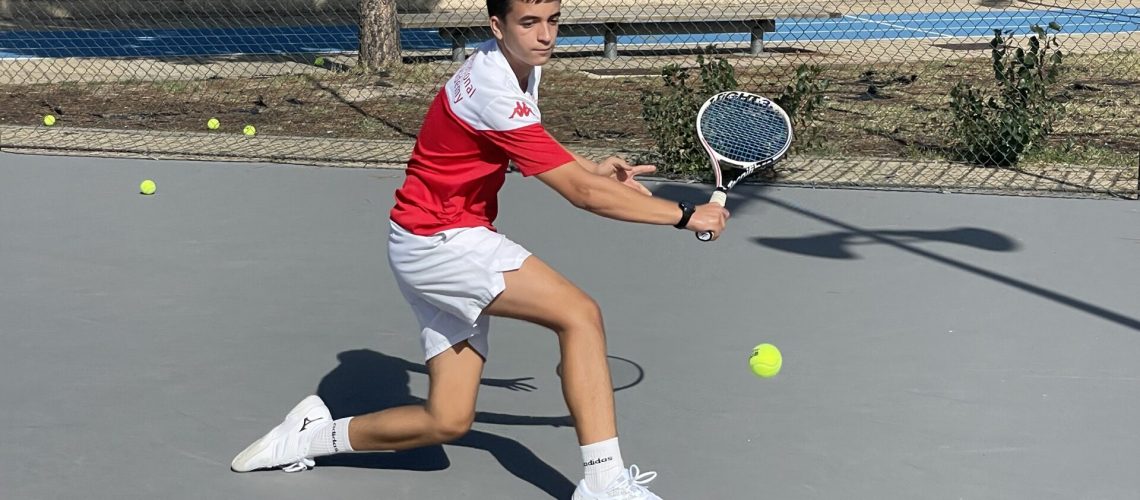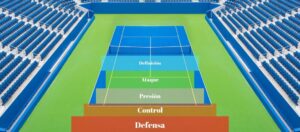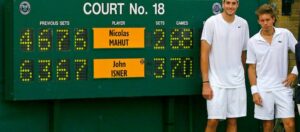I’ve seen all kinds of concerns on the court: technical, tactical, strategic, psychological …but I have heard little of the vision. Of course, the famous phrase that we all know: “Watch the ball!” is still ringing in one’s ears once in a while, though … What does it mean? How should you do that? There was a time when it was repeated to me more than my own name, but it was something difficult to achieve. I tried to stare at it all the way. It did not work. That’s because of the speed of the ball, tension, nerves, or any other reason, but to follow that yellow spot without taking an eye of it, is not easy. Then, another thing that is disturbing is the impact point. The ball hits the strings and it is thrown out with such speed that it’s a superhuman effort to look for it. So, how do the professionals look at the ball? How do you have to work that part of the game? Are there any tricks to make it easier? Yes, there are. There are three points of vision that make the work more methodical and achievable, but that does not diminish the difficulty that it involves. These points are:

- The hit point of the opponent.
- Over the net.
- Your own hit point.
Each of these three points of vision affects different facets of your game. If, for example, you wonder why you do not get to the balls being in such a decent physical shape; or why you lose your balance on a ball that is so easy. I hope that what follows will give you some answers.
Point of vision 1 (Goalkeeper Effect)
The first would be the point of contact with the ball of your opponent. Just when he touches the ball with his racket, you have to be at your center, doing a split step and leaving at once with the ball to meet it. If you get this point of vision, you are going to have advantages in:
- Reacting quickly and thus improving your mobility without extra physical work.
- Coordinating yourself with the ball and not leaving blank spaces in your movement.
- Anticipating and decoding the conscious (or unconscious) tricks of your opponent.

Point of vision 2 (Timing)
Look at the ball when it is over the net. At this point you have to be armed and, if you can, you have to start transferring the weight. You must coordinate this with your own gestures, because for each particular player the TIMING is different. As you achieving this step, your benefits will be:
- On time preparation and fixing of the hit point in front.
- Possibility to take the position before and start walking, going into the ball (following through with your body).
- Playing with a rising (live) ball, cutting corners and putting pressure on the opponent.

Point of vision 3 (Fixating)
Let’s talk now about the main point of the vision: setting the impact. Even at the professional level, one of the things that make a difference is the way a player looks at the ball at this time. Many of them take their eyes off before hitting the ball and already set them in place where they want to send it.
But those milliseconds are enough for the contact not to be from the most controlled ones. Maybe it’s hard to keep that eye tension on every shot, but there is a solution: to hold the head fixed at the hit point. I will say even more… It is not enough just to fix it there, but also you have to keep your head there until you finish the following through the ball. The distance that flies the ball from your racket to the net is the least important for vision. Your job there is to come out smoothly from the shot and get back to your center until the ball reaches the opponent’s racket. The advantages of fixing the impact are:
- Concentration. If you are distracted at some point, repeat to yourself: “I have to fixate the impact.” That keeps you in the game and your eyes stop dancing from side to side.
- Balance. When you perform a stroke, fixating maintains your axes and thereby balance. Look at dancers. When they make a 360 degree turn, the point of view is one of the things that is very important.
- Sweet spot. You’ll be surprised how easy it will make a half volley from the baseline or a forced shot.

Then let’s see the cycle of the path of the ball:
- The opponent’s contact point point – In your center, you do a split step and react at a time as the ball comes.
- Over the net – You are now armed and start walking forward.
- Your impact – Fixed head and get control of the stroke.
- Recovery – The time it takes the ball in the air from your racket to the contrary’s, it is the time you have to regain your center.









